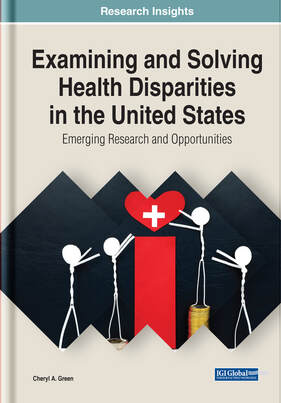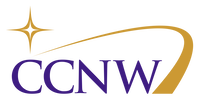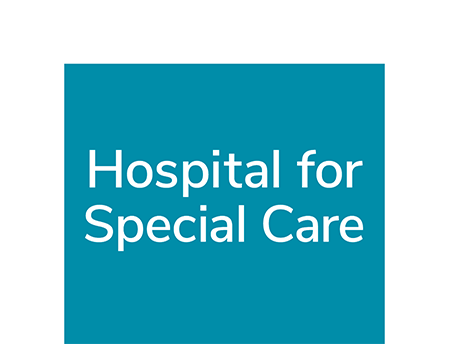 Wednesday, September 27th at 12:00pm ET Free webinar, registration required With the proposal of a historic federal staffing mandate for nursing homes, many are looking at caps on agency staffing to level the playing field for recruiting nurses and aides. However, even if new legislation passes in your state, it won't take effect overnight, nor will it provide a cure-all for the staffing issues plaguing our industry. In fact, introducing rate caps in the midst of a federal staffing mandate may create a whole new set of challenges. In this timely webinar, we will assess the current landscape of rate caps, their potential impact on your facility, and provide actionable strategies for maintaining adequate staffing levels without overpaying agencies. Register for this webinar to learn:
0 Comments
Over the past decade, much emphasis has been placed on the importance of academic progression for the nursing workforce.
Scholars and health experts agree that higher levels of education increase delivery of quality patient centered care across all health care settings. However, obtaining and analyzing equitable national and state data regarding academic progression trends in nursing is no easy task. Multiple sources and researchers have benchmarked and cross walked key data sources over the years. NEPIN, the National Education Progression in Nursing collaborative, sought to locate and evaluate a single data source to equitably interpret current trends in academic progression. Created as an expansion of the former Academic Progression in Nursing (APIN) initiative of the Robert Woods Johnson Foundation, NEPIN is the only national entity solely devoted to ensuring that nurses have access to higher levels of education and achievement. Operating under the fiscal oversight of the OADN Foundation (a federally recognized 501c3 nonprofit organization), NEPIN’s stakeholders understand that successful patient outcomes depend on a well-equipped and sufficiently supported nursing workforce. This 2021 Report explores the state of Registered Nurse (RN) and Licensed Practical Nurse (LPN) pre-licensing nursing education in Connecticut and highlights:
The report was created in collaboration with the Connecticut League for Nursing (CLN) and the Connecticut Data Collaborative (CDC). The data used in this Nursing Education Report was created from an annual survey the CLN disseminated to all the nursing schools and programs in Connecticut.
The WHO report cites critical research and references as to why and how Simulation as well as other Virtual learning technologies can transform learning and better prepare our students to meet national competencies and successfully transition to practice thereby limiting the human capital and financial resources that our healthcare settings spend to onboard the new nurse.
Access the WHO Report at: https://www.who.int/publications/i/item/dfigital-education-for-building-health-workforce-capacity-978-92-4-000047-6 Preparing Nurse Faculty and Addressing the Shortage of Nurse Faculty and Clinical Preceptors.10/6/2021 This Report was prepared by the National Advisory Council on Nursing Education and Practice.
In their 17th Report to the Secretary of Health and Human Services and the US Congress this past December, is meant to inform the Secretary and Congress on Policy matters arising in the administration of Title VIII Funding pertaining to nursing workforce, nursing education and nursing practice. Nursing Education is in crisis, and it will take ALL of us to stem the tide and expand our educational pipeline capacity! Report can be found at: https://oadn.org/news/nacnep-report-preparing-nurse-faculty-and-addressing-the-shortage-of-nurse-faculty-and-clinical-preceptors/ In early June of 2021, the Future of Nursing: Campaign for Action took a first step towards realizing the vision outlined in the National Academy of Medicine’s (NAM) new report, The Future of Nursing 2020 – 2030: Charting a Path to Achieve Health Equity. A virtual Summit with 200 key opinion leaders, experts, and change makers across the fields of health care, nursing, business, academia, and social justice participated in the 2-day hands on event. Twenty-eight (28) teams were created to address each of the report’s 54 sub-recommendations (under its nine major recommendations), answered questions including, What multi-sector partnerships are needed to implement this recommendation? and What milestones or benchmarks will tell us we’ve succeeded?
The result was 54 Draft Action Plans, each with specific tasks, timelines, and goals, that can guide how nursing will help transform health, health care and health equity for all. Access the action plans and next steps @ https://campaignforaction.org/resources/future-of-nursing-2030-action-hub/ Resources are available for your organizations to utilize via your State Action Coalitions that undertook many initiatives related to the 2020 Future of Nursing Report published by the National Academy of Medicine. Even if your Action Coalition is not active, the national website for the Campaign still has a treasure trove of materials and toolkits refenced for your use- All free of charge.
In Connecticut, as one of the statewide initiatives via our Coalition, a 4- module online self-paced Population Health Course was created and launched. Although the activities and monies to support the Coalition have waned, The Board of the CT League for Nursing made a commitment to keep the course up and running with a major content revision and update competed in this past July. This Course can be accessed at: www.CLNOnlineEducation.com National Campaign resources can be found at: https://campaignforaction.org/resources/#p=1 Accelerating Nursing, Transforming Healthcare authored by: AONL, Johnson and Johnson and ANA10/6/2021 In the executive summary of this report, six out of eight priorities for nurse-led transformation directly correlate to the issues that you've identified in your thinktank white paper. These include:
This report provides baseline workforce data and is created in collaboration between the National Council of State Boards of Nursing (NCSBN) and the National Forum of State Nursing Workforce Centers. The most recent April 2021 Survey Report can be found at WWW.journalofnursingregulation.com
The Report highlights the demographics of RNS an LPNs across the nation. As you know, data without context, benchmarking and discussion & debrief with “intimate” stakeholders may not paint an accurate picture. Although this report is a very robust reflection of employment of nurses across the country, the items included in the minimum data set for supply were created for the purposes of licensing and regulation and not truly designed to capture the nuances of an ever-changing nursing workforce. Many forecasting models used to project demand and future supply are based on employment patterns in the past. You know better than I… that this no longer holds true, Nurses do not get hired by one institution right out of school and spend their entire careers with that employer. They move constantly and cause what is now termed as “The Churn” . Researchers are still trying to get a hold of this phenomena and incorporate it into new forecasting models to better align our supply projections.  by Cheryl Green, PhD, DNP, RN, LCSW, CNL, CNE, ACUE, MAC, FAPA Disparities in healthcare arise when there is an imbalance between opportunities to achieve optimal healthcare with access, education, and financial means. However, the difficult subject of health disparities in healthcare and its historical origins demonstrate that culture and race may contribute to health crises of minority groups within the United States. Educating vulnerable populations on making lifestyle modifications and reducing stress without educating healthcare professionals about increasing their awareness of hidden biases, prejudgment, and discrimination, will allow health disparities to remain. Examining and Solving Health Disparities in the United States: Emerging Research and Opportunities is a critical reference book that provides discussion on the topic of inequities in healthcare that impact health disparities and serves to increase awareness on these issues. The author particularly explores health disparities from a unifying perspective that supports the understanding of why health disparities occur and how an increase in the awareness, education, and confrontation of discriminatory acts can help make changes at the organizational and societal levels. Covering topics that include cultural clashes, equity, healthcare delivery, and healthcare accessibility, this book is essential for government officials, policymakers, medical administrators, medical professionals, medical boards and directors, researchers, academicians, and students involved in gender studies, cultural studies, social justice, socioeconomics, ethics and law, government, medicine, public health, psychology, sociology, and more. Topics Covered The many academic areas covered in this publication include, but are not limited to:
|
Categories
All
Archives
June 2024
|
||||||||
OUR MISSIONTo foster collaborations to ensure a highly educated, diverse, and sustainable nursing workforce to support the healthcare needs of Connecticut residents.
Terms of use Policy | Privacy Policy
Event Policy: No refunds will be given two (2) weeks prior to any event |
LoginContact UsFor more information or questions, please complete the online form to contact Marcia B Proto, M.Ed, CAS via email.
|

 RSS Feed
RSS Feed

















